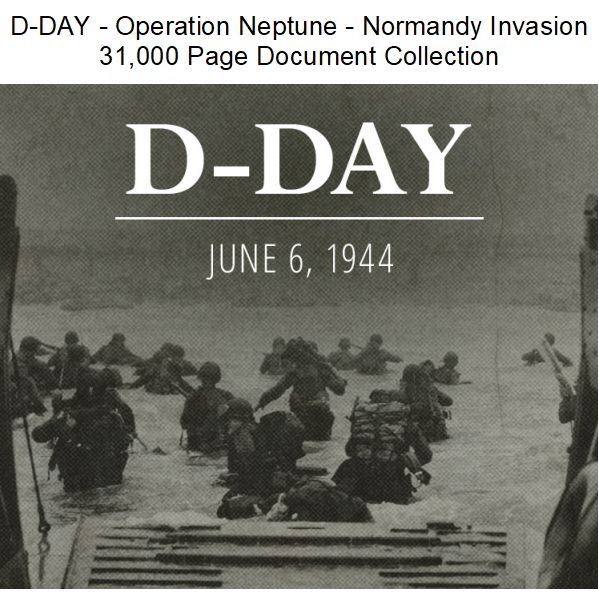
D-DAY – Operation Neptune – Normandy Invasion 31,000 Page Document Collection
$69.00
Description
Overlord and Anvil: Timelines and Key Figures of WWII
1942
- Early 1942 onwards: Inception, development, training, administration, and implementation of all aspects of amphibious warfare by the United States for World War II begin. This includes the creation and operation of the War Department Amphibian Command.
1942 – 1944
- Throughout this period: Extensive planning and operational documents are generated by President Franklin D. Roosevelt, his administration’s War Department, and the Joint Chiefs of Staff related to Operation Overlord (the invasion of Northwestern Europe through Northern France) and Operation Anvil (the Allied invasion of Provence, Southern France). This includes correspondences between Roosevelt and Prime Minister Churchill, strategic studies, intelligence reports, outline plans, and minutes of meetings.
- Buildup of U.S. Army Air Forces in the UK: This period sees the significant increase in American air assets in the United Kingdom in preparation for the invasion.
- Allied Air Force Planning: Allied Air Force units are engaged in detailed planning for D-Day/Operation Overlord, covering photographic reconnaissance, anti-aircraft defense on the continent, and various operations like Crossbow (against V-weapons), Eclipse, Talisman, and Linnet (likely related to air support and logistics).
1944
- May 15, 1944 (approximately): A British Foreign Office memo, dated twenty-one days before D-Day, discusses “Assassination Priorities for OVERLORD,” identifying potential German and Vichy collaborators whose removal would assist the operation.
- June 4, 1944: American newspapers begin to extensively cover the impending D-Day invasion, with front-page news appearing across the country.
- June 5-6, 1944:Mission Boston (part of Operation Neptune): The 82nd Airborne Division lands paratroopers, parachute artillery elements, and the 319th and 320th regiments in Normandy as part of the initial D-Day assault.
- June 6, 1944 (D-Day): Allied forces launch the invasion of Normandy (Operation Overlord/Neptune). During the assault, First Lieutenant Robert P. Mathias of the 508th platoon (82nd Airborne Division) becomes the first U.S. Army officer killed by German fire on D-Day.
- June 7, 1944: The 325th Glider Infantry Regiment (GIR) of the 82nd Airborne Division arrives by glider in Normandy to provide a division reserve following the initial airborne assault.
- First Week of D-Day (June 4th onwards): American newspapers widely report on the initial days of the Allied D-Day invasion of Northern France.
- August 15, 1944: Operation Anvil (later renamed Operation Dragoon), the landing operation for the Allied invasion of Provence (Southern France), is executed. This operation had been initially planned in conjunction with Operation Overlord but was postponed due to a lack of resources.
- 1944-1945: U.S. Navy combat artists create paintings, drawings, and sketches before, during, and after the D-Day invasion, capturing the events artistically.
Post-1944 (Specific dates not provided, but activities continue)
- Beyond Normandy: The 82nd Airborne Division continues its operations, including engagements in Sicily, Italy, the Battle of the Bulge, and eventually participating in the Occupation of Germany.
- Ongoing Documentation: The review and compilation of materials related to amphibious warfare and D-Day continue, with some documents dating as late as 2019 in the collected records.
Cast of Characters:
- President Franklin D. Roosevelt: (United States) The President of the United States during World War II, heavily involved in the planning and execution of Operation Overlord and Operation Anvil, engaging in strategic discussions and correspondence with Allied leaders and the Joint Chiefs of Staff.
- Prime Minister Winston Churchill: (United Kingdom) The Prime Minister of the United Kingdom during World War II, a key Allied leader who corresponded and collaborated with President Roosevelt on strategic war planning, including Operation Overlord.
- Marshal Joseph Stalin: (Soviet Union) The leader of the Soviet Union during World War II, mentioned as having meetings with President Roosevelt and Prime Minister Churchill, likely concerning broader Allied war strategy.
- First Lieutenant Robert P. Mathias: (United States Army, 82nd Airborne Division, 508th platoon leader) The first U.S. Army officer killed by German fire on D-Day, June 6, 1944, during the airborne assault as part of Operation Neptune.
- Stulpnagel: (Germany) Identified in a British Foreign Office memo as a potential assassination priority for Operation Overlord, suggesting a high-ranking German official whose removal would benefit Allied efforts. Likely Carl-Heinrich von Stülpnagel, a German general involved in the occupation of France.
- Runstedt: (Germany) Identified in a British Foreign Office memo as a potential assassination priority for Operation Overlord. Likely Gerd von Rundstedt, a prominent German Field Marshal who commanded forces in Western Europe.
- Rommel: (Germany) Identified in a British Foreign Office memo as a potential assassination priority for Operation Overlord. Likely Erwin Rommel, a highly respected German Field Marshal known for his command of the Afrika Korps and later involved in defending the Atlantic Wall.
- Vichy Collaborators: (France) Unnamed individuals mentioned in the British Foreign Office memo as potential assassination targets whose “removal from the scene would assist” Operation Overlord, indicating French officials or figures collaborating with the German occupation forces.
D-DAY – Operation Neptune – Normandy Invasion 31,000 Page Document Collection
A 31,438-page collection made up of a compendium of 8 BACM Research document collections including:
World War II: War Department Amphibian Command Records 1942-1944 & Amphibious Warfare Documents
World War II: D-Day President Roosevelt and War Department Planning and Operational Documents
World War II: United States Army 82nd Airborne Division Action & After-Action Reports
World War II: Allied Air Force D-Day/Operation Overlord Planning Documents
D-Day – Invasion of Normandy Artwork (1944-1945)
D-Day Invasion of Normandy – Operation Overlord Documents and Photos
British Foreign Office File on Assassination Priorities for Operation OVERLORD
World War II: D-Day Frontpage News
Short Descriptions
World War II: War Department Amphibian Command Records 1942-1944 & Amphibious Warfare Documents
This collection contains a total of 11,571 pages of Correspondences, Reports, Memoirs, Monographs, Books, After Action Reports, Maps and Photographs. They cover the inception, development, training, administration, implementation, and review of all aspects of amphibious warfare used by the United States in World War II. The materials date from 1942 to 2019.
World War II: D-Day President Roosevelt and War Department Planning and Operational Documents
6,143 pages of President Franklin D. Roosevelt, Roosevelt Administration’s War Department and Joint Chiefs of Staff files related to Operation Overlord, the invasion of Northwestern Europe entering through Northern France. The invasion is commonly known today as D-Day. The material also includes information about Operation Anvil. Anvil was the code name for the landing operation of the Allied invasion of Provence (Southern France) on 15 August 1944. The operation was initially planned to be executed in conjunction with Operation Overlord, the Allied landing in Normandy, but the lack of available resources led to a postponement of the second landing.
Materials include: Correspondences between President Roosevelt and Prime Minister Churchill, strategic studies, intelligence reports, outline plans, operational reports, minutes of FDR meetings with the Joint Chiefs of Staff, FDR drafts of speeches with handwritten notations and changes, plans for and minutes of the meetings between President Roosevelt, Marshal Stalin and Prime Minister Churchill
World War II: United States Army 82nd Airborne Division Action & After-Action Reports
9,313 pages of after-action material including administration papers, administration orders, journals and messages, terrain studies and, records of combat, periodic reports, narrative histories, German POW interrogation reports, operation memoranda and maps.
Normandy
The 82nd Airborne as part of Operation Neptune, conducted Mission Boston. On 5 and 6 June, the 82nd Airborne landed paratroopers, parachute artillery elements, and the 319th and 320th. During the 6 June assault, a 508th platoon leader, First Lieutenant Robert P. Mathias, would be the first U.S. Army officer killed by German fire on D-Day. On 7 June, after this first wave of attack, the 325th GIR would arrive by glider to provide a division reserve.
In addition to Normandy materials cover Sicily and Italy, The Battle of the Bulge, and the Occupation of Germany.
World War II: Allied Air Force D-Day/Operation Overlord Planning Documents
3,608 pages of material. 2,290 pages of Royal Air Force copies of original source material, Allied Air Force messages, reports, directives, and other records related to the plans and operations of Allied Air Force Units for D-DAY – Operation Overlord – Normandy Invasion. Plus 1,318 pages of related secondary source material – official military histories.
Categories of the BIGOT classified Allied Air Force Overlord documents in this collection from Royal Air Force include:
Photographic Reconnaissance and Interpretation, Antiaircraft Defense on the Continent in Connection with Overlord, Buildup of U.S. Army Air Forces in the UK, Crossbow – Current Operations and effect on Overlord, Operations Eclipse and Talisman, Operation Linnet, and Barrage Balloons.
D-Day – Invasion of Normandy Artwork (1944-1945)
186 paintings, drawings and sketches created by U.S. Navy combat artists before, during, and after the D-Day invasion.
D-Day Invasion of Normandy – Operation Overlord Documents and Photos
192 pages of documents and 158 photographs covering D-Day, Operation Overlord
British Foreign Office File on Assassination Priorities for Operation OVERLORD
Dated twenty-one days before the D-Day launch of Operation OVERLORD, the first memo in a 40-page file designated as FO 1093/292, has the subject “Assassination Priorities for OVERLORD,” and states, “The Chief of Staff has asked me to look into this, and to advise him about suitable candidates to whom attention might be paid, prior to, on and after ‘D’ day. On the German side Stulpnagel, Runstedt, and Rommel look likely, but there may be some Vichy collaborators whose removal from the scene would assist.”
World War II: D-Day Frontpage News
227 Full Sheet American newspaper frontpage pages from the first week of D-Day. The news as covered by several American newspapers, starting on June 4, 1944. Newspapers from Alaska to Hawaii to St. Croix to Connecticut covering the news reported on the initial days of the allied D-Day invasion of Northern France.
The files in all collections contain a text transcript of all computer recognizable text embedded into the graphic image of each page of each document, creating a searchable finding aid. Text searches can be done across all files in the collection
Related products
-
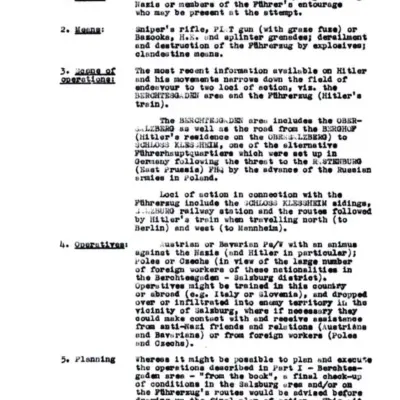
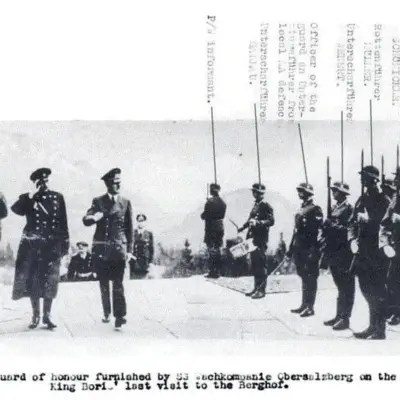
World War II: Adolf Hitler and Operation Foxley – British Assassination Plot
$19.50 Add to Cart -
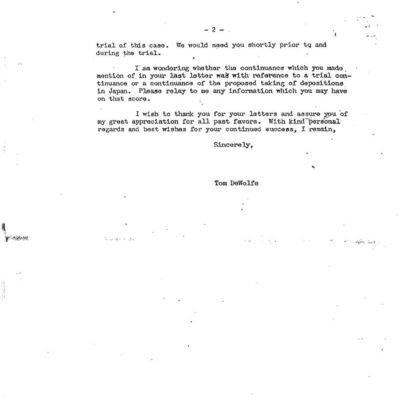
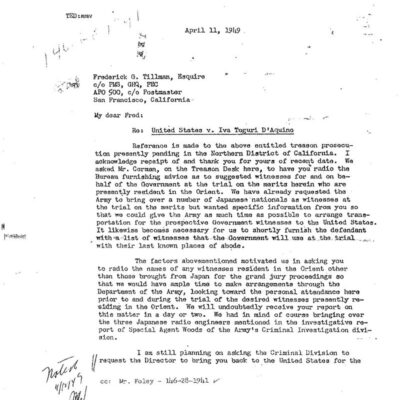
Tokyo Rose: Department of Justice Prosecution Files
$19.50 Add to Cart -
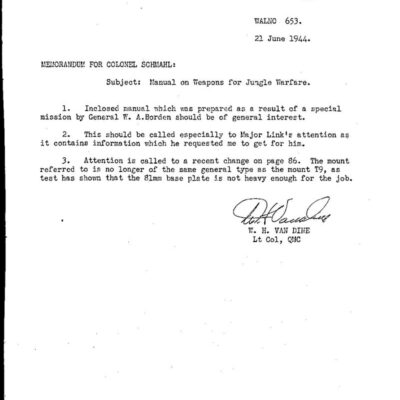
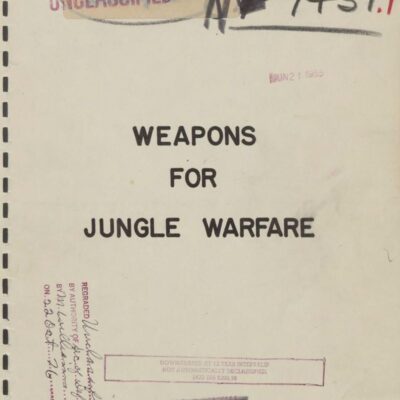
World War II Manual on Weapons for Jungle Warfare (1944)
$1.99 Add to Cart -
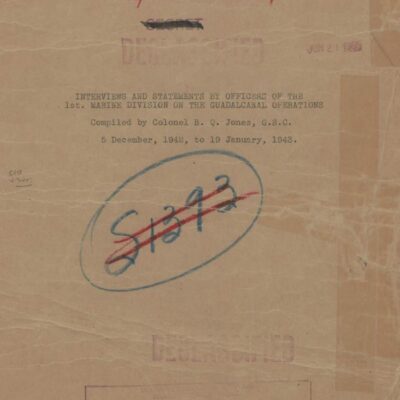
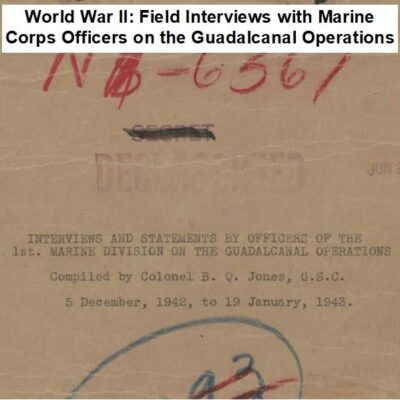
World War II: Marine Corps Officer Interviews on Guadalcanal Operations
$3.94 Add to Cart